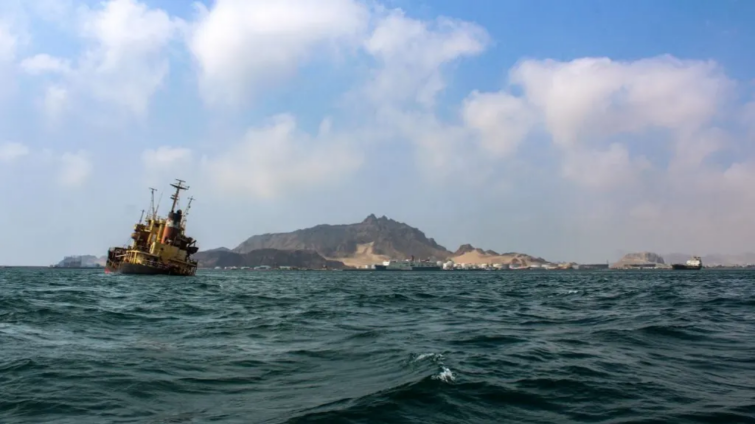The number of water conflicts and disputes, particularly in northern and Sub-Saharan Africa, is increasing, according to a new report released today in Nairobi, Kenya by India-based Centre for Science and Environment (CSE).
The report dubbed 2024 State of Africa’s Environment on theme water shows a clear upward trend in the number of water conflicts rising from 28 in 2019 to 71 in 2023 representing an increase of 153.6% over five-year period.
The number of conflicts decreased from 28 to 24 from 2019 to 2020. This was a decline of about 14.3%, suggesting a temporary decrease in water-related tensions or improved conflict management. The number of conflicts increased from 24 to 29 in 2021, which was a rise of about 20.8%, indicated a rebound of rising water conflicts.
In 2022, the number surged from 29 to 53, marking an approximate increase of 82.8%. The following year saw another rise, with the figure climbing from 53 to 71, which represented an increase of around 34%. While it was a slower rate of increase compared to the previous year, it still showed that the upward trend was continuing.
The report links the rising cases to growing water scarcity as the region face severe increased competition for water resources.
The data also indicates a troubling trend of increasing water conflicts over the period, suggesting that issues related to water resources are becoming more contentious and widespread.
From 2004 to 2013, 20 countries reported 68 incidents of conflicts over water resources. Of these, five countries—Somalia (12 incidents), Ethiopia (7), Egypt (6), Kenya (6), and Sudan (6)—accounted for over 54% of the total.
Between 2014 and 2023, 32 countries reported 295 incidents of conflicts over water resources. Five countries accounted for more than 54% of these conflicts: Somalia with 41 incidents, South Africa with 36, Sudan with 32, Kenya with 31, and Burkina Faso with 22.
“With increase in geopolitical tensions, water has been considered as a weapon of war,” the report stated, citing instances in Burkina Faso, where at least 32 water facilities were destroyed during January to May in 2022, impacting nearly 300,000 people targeting attacks ranged from direct hits on water points and water trucks, purposeful contamination of water resources to sabotaging public water network’s generators.
In South Africa, unrest due to inadequate safe water and sanitation is escalating, with ongoing vandalism of water infrastructure severely impacting the Eastern Cape municipality, according to the country's water and sanitation department.
“Incidences of vandalism of the local pump station at Fort Beaufort and surrounding areas were reported that left the residents without the supply of water. These incidents over the years indicate a link with climate change and water-related violence.”
The report referenced data sources to emphasize the urgent need for improving access to basic water services in the continent. It also highlighted that disrupting civilians' access to water has evolved from being a mere consequence of conflict to becoming a deliberate weapon of war, representing a troubling and unacceptable escalation in violence that must be addressed.
Water-driven migration
The report's analysis showed that, political instability, chronic poverty and inequality, and climate change exacerbate water-driven migration across the continent.
According to data from the International Organization for Migration, the report projects that by 2050, approximately 200 million people will be classified as "environmental migrants," displaced by environmental factors such as extreme water events.
The report highlighted that the drylands of Ghana, Kenya, and Namibia are characterized by unpredictable water supply and high temperatures. It identifies several factors contributing to the stress in these areas, escalating aridity and soil degradation, poorly planned development interventions, rapid population growth, persistent poverty, inadequate communication infrastructure, and isolation from national centers of power. These conditions, it says, strain livelihoods dependent on natural resources, compelling communities to migrate.
Citing sources such as the IPCC, the report noted that most mobility influenced by environmental change remains localized. For example, land degradation in Ghana reduced agricultural incomes by $4.2 billion between 2006 and 2015, contributing to a 5.4% increase in the national poverty rate in 2015. In Kenya, environmental and land degradation has heightened mobility, with habitat fragmentation, reduced grazing areas for livestock, and increased stocking rates being key factors driving vegetation loss in the country's rangelands.
Latest Stories
-
Nissan Navara Pro-4X Warrior proves its mettle at the Spirit of Africa Trophy
3 minutes -
Maxwell Kudekor runs for GJA National Organising Secretary post
8 minutes -
Juaboso police arrest suspected armed robber at mining site
11 minutes -
Western North Police launch operation to arrest unlicensed and reckless tricycle riders
18 minutes -
Fuel prices to drop by up to 9% – ASEC predicts
20 minutes -
Adongo mocks minority for ‘abandoning’ Wontumi protest and returning to Parliament
26 minutes -
Minority MPs resume parliamentary duties after protest over Wontumi’s GH₵50m bail
1 hour -
Gospel singer Afia Ayiwah releases latest single ‘Testify’
2 hours -
CMC MD engages OFI to deepen cocoa sector collaboration and drive economic growth
2 hours -
Ghana’s bid falls short as UAE’s Shaikha Al Nowais elected UN Tourism Secretary-General
2 hours -
GREDA calls for price reduction on building materials amid cedi appreciation
2 hours -
Exporters facing hardship amid cedi appreciation – CANCHAM
2 hours -
Ghana’s Energy Transition and Lessons for Ewoyaa: A pathway to equitable development
2 hours -
Ghana’s debt-to-GDP to narrow slightly below 60% by December 2025 – AfDB
2 hours -
Wontumi detention: Police deploy additional officers to EOCO HQ amid security beef-up
2 hours

